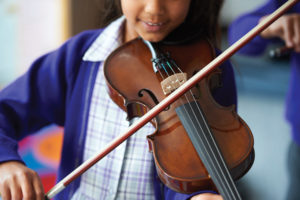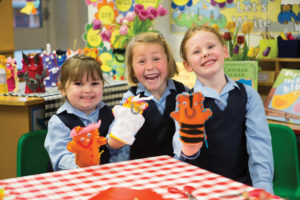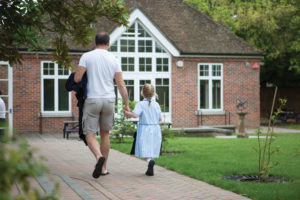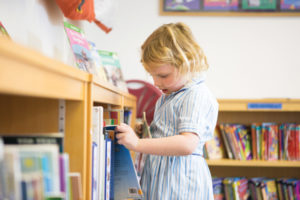
The sons and daughters of foster carers play a vital role in fostering; they contribute hugely towards the success of fostering placements and make a valuable difference to fostered siblings as they settle into their new home.
Fostering is a life changing decision and should be considered and thought about as a family. Sometimes, the perceived impact of fostering on birth children prevents families from finding out more as they feel they need to wait until their children are older, however for many of the families who foster for Brighton & Hove City Council, the experience has been positive and rewarding.
Hannah (12) and Louis (16) have been fostering with their mum and dad for seven years. When they began, aged five and nine, they weren’t sure what to expect but they are now wonderful examples of the compassion, kindness and maturity essential to the success of a fostering placement.
Louis remembers, “It was a really long time ago when we first started – there was a sense of nervousness, but I thought it was exciting. I knew I was looking forward to meeting whoever came to live with us.”
Hannah was much younger when the family’s fostering journey began but remembers getting to know everyone involved in the assessment process. The pair would draw and write about some things they were looking forward to and were encouraged to talk about themselves; their likes, their worries and their hopes.
“Our Assessing Social Worker would sit us down, sometimes with Mum and Dad, sometimes without, and go through the process to make sure we were OK. I remember we had to talk about what we’re like, and they’d tell us what the kids could be like.”
For Louis, the best thing about fostering is the first moments of a child’s arrival into his home. He enjoys talking to them, learning about them and finding out about what they like to do. “I soon found out the foster child we have now really likes playing Mario. I said hey, we have a Wii, do you want to go and play?” Louis says that further down the line it gets even better “because then you really know them. They’ll come up to you and ask hey, do you want to do this or hey do you want to that? It becomes a real connection I guess.”
Hannah has found it hard at times to see children move on, but has a close relationship with her social worker, who visits her frequently; “She’s always there to make sure I am OK and I know the children will be going to a nice home or back to their family.”
Louis says, “If we need to talk, there’s always someone there – we’re never left in the dark.”
The support in place for sons and daughters of foster carers also includes regular day trips and activities. A team of Brighton & Hove City Council Fostering Support Officers run activities throughout all of the school holidays, for birth children and foster children alike. The trips are a treat for the kids, who get an opportunity to form friendships with children in similar circumstances, and a well-deserved break for foster carers.
Louis talks excitedly about one of the most popular trips. “A group of us kids go to Chessington, to have an entire day there, and then we get back for a bit of pizza. There’s loads of activities, be it for foster children, or children like us, so we’re all in included and we have a really fun day out.”
Reflecting on their seven years as a foster family, Hannah and Louis both feel that fostering has bought them closer together.
Hannah says “I feel like it’s definitely made me and my brother a lot closer and it’s definitely made us a lot closer as a family. We talk to each other a lot more now.”
Louis says “It’s taught us to understand and respect others. It’s made me who I am today, not all on my own, I’ve had help from everyone around me, but it’s been really good. I now work in a primary school. It’s my first job. I’ve taken my love of fostering and taken it out into the wider world, looking after 30 kids at an after-school club! It’s definitely made me who I am, and I do what I love and enjoy.”
Fostering younger children with an earlier bedtime means the family can enjoy time together in the evenings, watching a movie or playing a board game. They are keen campers and if it’s not possible for the children in their care to join them on their trips, they call upon respite carers to help. Hannah says, “The children always go to the same respite carer, so they feel comfortable when they go.”
Louis feels that fostering “makes you a better person and brings your family together.” His advice to parents who want to explore fostering but feel unsure how to begin the conversation with their birth children is to “let them know you’re still going to be their mum and dad. Nothing is going to be severely affected, it’s still going to be your family – just with extra people.”
If you feel you could make a difference by becoming a fostering family, you can find further information and details of upcoming information events by visiting
www.fosteringinbrightonandhove.org.uk. Alternatively, please call 01273 295444 to speak directly with a member of the team.

 If Einstein could not talk until he was four or read until he was seven (which is apparently the case) and Didier Drogba studied accountancy before finding himself playing for Chelsea at the mature age of 26, how can we hope to spot the gifted and talented amongst the cherished progeny that walk through our gates? What does ‘gifted and talented’ actually mean and how should we be supporting them?
If Einstein could not talk until he was four or read until he was seven (which is apparently the case) and Didier Drogba studied accountancy before finding himself playing for Chelsea at the mature age of 26, how can we hope to spot the gifted and talented amongst the cherished progeny that walk through our gates? What does ‘gifted and talented’ actually mean and how should we be supporting them?
 whether it is in leadership skills, having a way with the spoken word or playing Mozart. Our school ethos of Education with Character, offers a variety of ways of learning, ensuring that we, as teachers, spot unique talents and cultivate them, and parents are encouraged to do the same. We need to push our children as far as possible in their ability – and then another little nudge beyond. Let’s make sure we don’t fail to spot any Thomas Edisons or Albert Einsteins of the future.
whether it is in leadership skills, having a way with the spoken word or playing Mozart. Our school ethos of Education with Character, offers a variety of ways of learning, ensuring that we, as teachers, spot unique talents and cultivate them, and parents are encouraged to do the same. We need to push our children as far as possible in their ability – and then another little nudge beyond. Let’s make sure we don’t fail to spot any Thomas Edisons or Albert Einsteins of the future. by Naomi Bartholomew
by Naomi Bartholomew

 Ballet offers so much more than just pointed toes; it offers children the opportunity to express themselves freely, whether that be using their butterfly wings to fly away, or joining the marching band and playing their favourite instrument. This is something very few other physical activity schemes offer. This creativity is so important to a child as it enables them to explore their inner selves in addition to the physical world, creating emotional experiences and memories that will remain with them for life. I would highly advise all children are given the opportunity to dance, whether this be something they wish to pursue as a career, perform as a hobby or just use as a regular class for fitness purposes. The positive effects on their social, cognitive and physical development are numerous.
Ballet offers so much more than just pointed toes; it offers children the opportunity to express themselves freely, whether that be using their butterfly wings to fly away, or joining the marching band and playing their favourite instrument. This is something very few other physical activity schemes offer. This creativity is so important to a child as it enables them to explore their inner selves in addition to the physical world, creating emotional experiences and memories that will remain with them for life. I would highly advise all children are given the opportunity to dance, whether this be something they wish to pursue as a career, perform as a hobby or just use as a regular class for fitness purposes. The positive effects on their social, cognitive and physical development are numerous.











